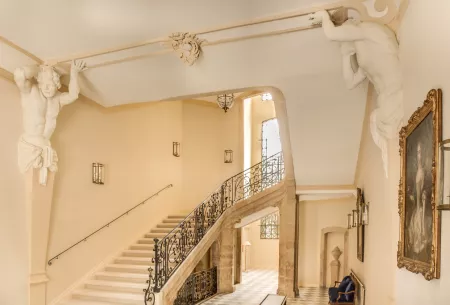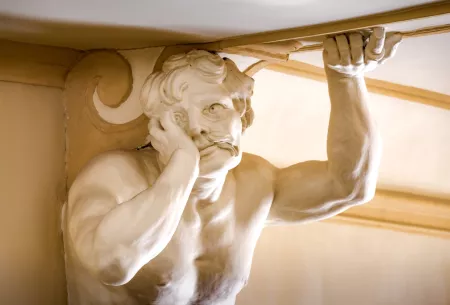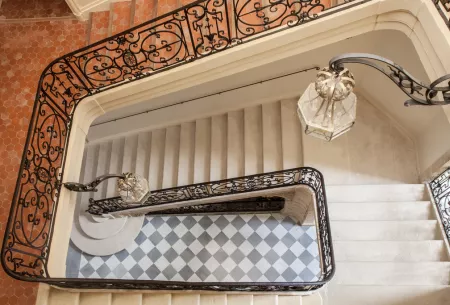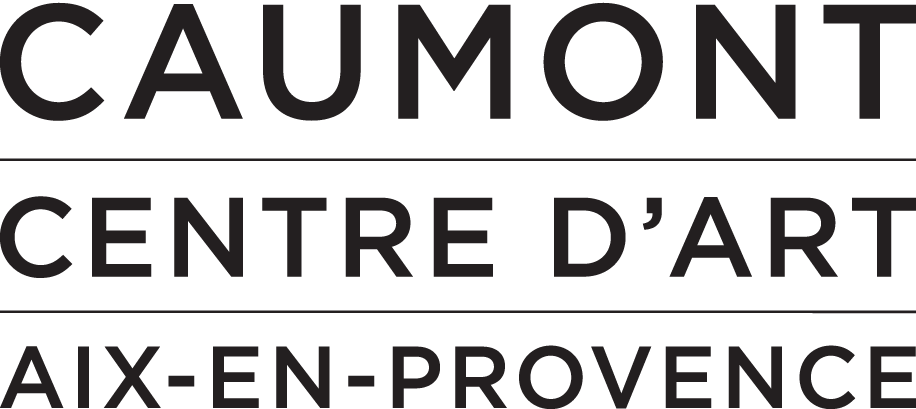The art center is open every day from 10 a.m. to 6 p.m., including December 25 and January 1st.
The entrance hall and the staircase

The entrance hall
The entrance hall plays a main role in the distribution of rooms in a private mansion. As the first room, it must impress upon guests the splendour of the property.
According to accounts, when the Brunys organised parties at the mansion, they would have a servant dressed up in Middle-Eastern attire awaiting guests in the entrance hall.

Two imposing braced atlantes dominate the hall, seeming to hold up the mansion. They are the work of sculptors Honoré Gastaud and Esprit Routier. Between the two giants, a mascaron bears the Bruny family coat of arms. The same stag depicted on the balcony iron work is represented here one again. In the corner, an indoor fountain, typical of private mansions in Aix, underscores the wealth and luxury of the house in a region where water was scarce and precious.

The staircase
From the staircase in the entrance hall, three flights of stairs lead up to the two floors above. It was one of the first elements to be classifed in 1925 and rightly so. In Robert de Cotte's design of the facade, the first portion of the monumental staircase can be seen from the entrance porch. Even at the time it was built, it was considered as an outstanding decorative feature that could be seen from the outside of the building. The staircase's elegant ironwork was crafted by locksmith Raynaud, with acanthus leaf scroll motifs and interlocking Rs representing the Rolland de Réauville family. The same initials can also be seen in the plasterwork of the Salon des Rinceaux.
